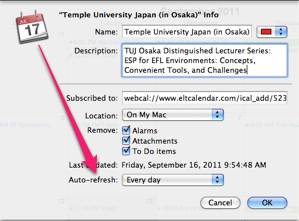Kyoto JALT:
TBLT in Japanese EFL
Date: Sunday, January 12th, 2020 Time: 1:00 PM - 5:00 PM
Speaker: Rintaro Sato (Nara University of Education), Natsuko Shintani (Kansai University)
Description:
Theme: Thinking about the incompatibility of TBLT and reconsideration of PPP-based approach in the Japanese EFL environment
Rintaro Sato (Nara University of Education)
One of the most important objectives of English Education in Japan is to develop students' communicative abilities. Thus, students have to be engaged in activities that will lead them to exchange their thoughts and feelings by actually using the English language. By "actually using English" (not learning to use English), students ideally learn English. Being compatible with this trend, the utilization of task-based language teaching (TBLT), which is a logical development of communicative language teaching (CLT), is attractive and gaining attention. However, as educators, we have to reflect on the effects of TBLT on Japanese EFL students' English learning, considering that the goal of English education is to improve the four language skills. With that in mind, this presentation will report on the incompatibility of TBLT in the Japanese secondary context, where learners do not have natural exposure to English or a real need to regularly communicate in that language. I argue that a drastic revision of TBLT is definitely needed for its application in Japanese junior and senior high school, and then suggest more effective ways to teach English to our students.
Rintaro Sato is professor at Nara University of Education. He received a Master's degree from Tsukuba University and earned his Ph.D. in Education at the Joint Graduate School in the Science of School Education, Hyogo University of Teacher Education. One of his research interests is in incorporating theories of second language acquisition into the Japanese EFL classroom.
Implementing tasks in English classrooms in Japan
Natsuko Shintani (Kansai University)
In this talk, I will explore a number of issues and possibilities relating to the implementation of task-based language teaching (TBLT) in Japan. Drawing on second language acquisition theories, I will seek for answers to questions such as What are the benefits of using tasks in English classroom?; Is it possible to incorporate tasks into the existing syllabus?; How can we assess the outcome of the TBLT?; and What are the roles of teachers in TBLT? I will first examine the goal of TBLT by contrasting it with the goal of present-practice-produce (PPP) where grammar explanation is given followed by production practice activities. I will draw on research that has investigated the relationship between implicit/ explicit learning and implicit/ explicit knowledge to argue that it is better able to develop students' communicative skills. I will conclude with some suggestions for implementing TBLT in the English classroom in Japan.
Natsuko Shintani is professor in the Faculty of Foreign Language Studies at Kansai University. She has taught English to young learners in her own private language school in Japan and applied linguistics courses at the postgraduate level at Nanyang Technological University in Singapore and the University of Auckland in New Zealand. Her research interests encompass the roles of interaction in second language acquisition, second language writing, and task-based language teaching. She has also co-authored a book entitled Task-based language teaching: Theory and practice, published by Cambridge University Press.
Organization: Kyoto Chapter of the Japan Association for Language Teaching (Kyoto JALT)
Cost: free
Venue: Campus Plaza Kyoto, 6F Ritsumeikan Satellite Room
Location: Kyoto City, Kyoto Prefecture, Japan
![]() Add this to iCal
Add this to iCal
![]() (Need help?)
(Need help?)
![]() Add to Outlook
Add to Outlook
![]() (Need help?)
(Need help?)
Contact Kyoto JALT
Website: http://www.kyotojalt.org
Email QR Code:








